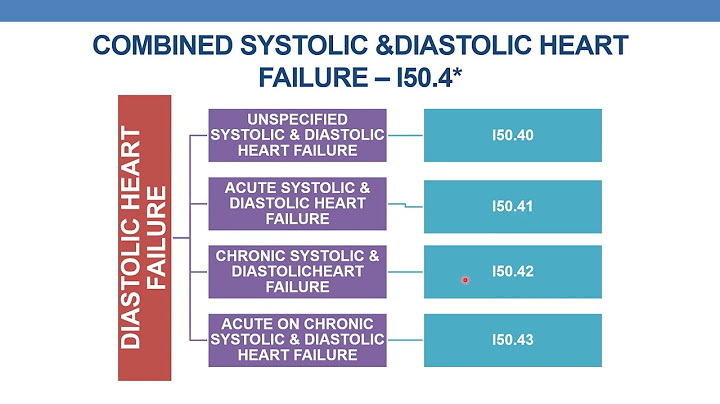Left-sided heart failureThe heart's pumping action moves oxygen-rich blood as it travels from the lungs to the left atrium, then on to the left ventricle, which pumps it to the rest of the body. The left ventricle supplies most of the heart's pumping power, so it's larger than the other chambers and essential for normal function. In left-sided or left ventricular (LV) heart failure, the left side of the heart must work harder to pump the same amount of blood. Show
There are two types of left-sided heart failure. Drug treatments are different for the two types.
Right-sided heart failureThe heart's pumping action moves "used" blood that returns to the heart through the veins through the right atrium into the right ventricle. The right ventricle then pumps the blood back out of the heart into the lungs to be replenished with oxygen. Right-sided or right ventricular (RV) heart failure usually occurs as a result of left-sided failure. When the left ventricle fails, increased fluid pressure is, in effect, transferred back through the lungs, ultimately damaging the heart's right side. When the right side loses pumping power, blood backs up in the body's veins. This usually causes swelling or congestion in the legs, ankles and swelling within the abdomen such as the GI tract and liver (causing ascites). Congestive heart failureCongestive heart failure (CHF) is a type of heart failure which requires seeking timely medical attention, although sometimes the two terms are used interchangeably. As blood flow out of the heart slows, blood returning to the heart through the veins backs up, causing congestion in the body's tissues. Often swelling (edema) results. Most often there's swelling in the legs and ankles, but it can happen in other parts of the body, too. Sometimes fluid collects in the lungs and interferes with breathing, causing shortness of breath, especially when a person is lying down. This is called pulmonary edema and if left untreated can cause respiratory distress. Heart failure also affects the kidneys' ability to dispose of sodium and water. This retained water also increases swelling in the body's tissues (edema). Written by American Heart Association editorial staff and reviewed by science and medicine advisers. See our editorial policies and staff. Ejection Fraction Measurement and Heart Failure What is “ejection fraction”?Ejection fraction (EF) is a measurement, expressed as a percentage, of how much blood the left ventricle pumps out with each contraction. An ejection fraction of 60 percent means that 60 percent of the total amount of blood in the left ventricle is pushed out with each heartbeat. This indication of how well your heart is pumping out blood can help to diagnose and track heart failure. What’s normal?
What’s too low?
What’s too high?An ejection fraction measurement higher than 75 percent may indicate a heart condition such as hypertrophic cardiomyopathy.  Download HF And Your Ejection Fraction Explained English (PDF) | Spanish (PDF) Using ejection fraction in diagnosisWhen examined using an echocardiogram, a significant number of patients with heart failure are revealed to have normal ventricular ejection fraction. This condition was previously called diastolic heart failure; it’s now referred to as heart failure with preserved ejection fraction. Your doctor may mention one of these two EF-related scenarios:
Tests for measuring EFYour doctor may recommend one or more of these tests to measure your ejection fraction:
Learn more about common tests for diagnosing heart failure. Written by American Heart Association editorial staff and reviewed by science and medicine advisers. See our editorial policies and staff. What causes reduction in ejection fraction?Some things that may cause a reduced ejection fraction are: Weakness of the heart muscle, such as cardiomyopathy. Heart attack that damaged the heart muscle. Heart valve problems.
How common is heart failure with reduced ejection fraction?Abstract. Importance: Worldwide, the burden of heart failure has increased to an estimated 23 million people, and approximately 50% of cases are HF with reduced ejection fraction (HFrEF).
Can you have reduced ejection fraction without heart failure?Left ventricular (LV) remodeling and reduced ejection fraction (EF) should be distinguished from the syndrome of clinical heart failure (HF). When LVEF is reduced (! 40%), but there are no signs and symptoms of HF, the condition frequently is referred to as asymptomatic LV dys- function (ALVD).
|

Related Posts
Advertising
LATEST NEWS
Advertising
Populer
Advertising
About

Copyright © 2024 ihoctot Inc.


















